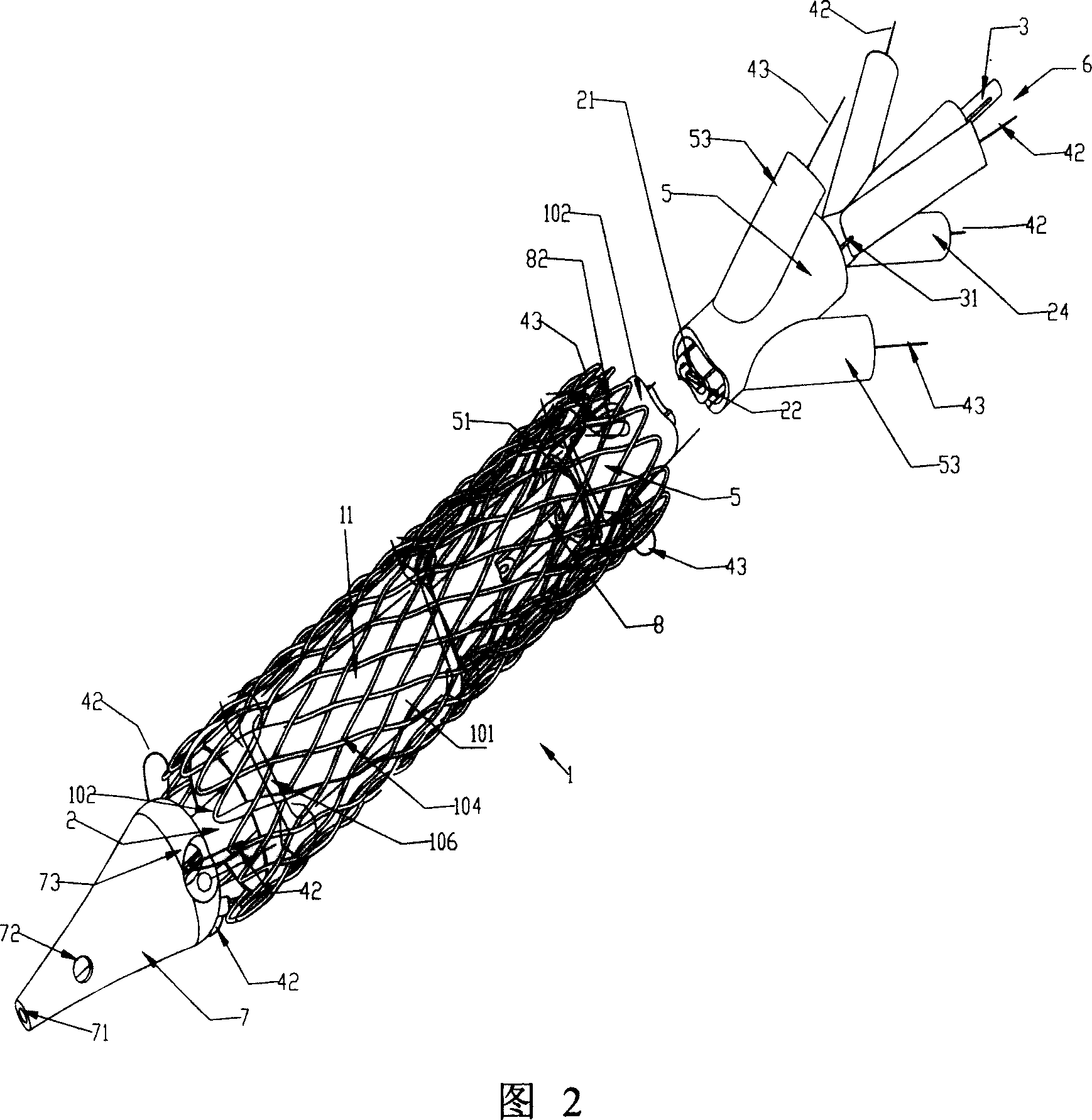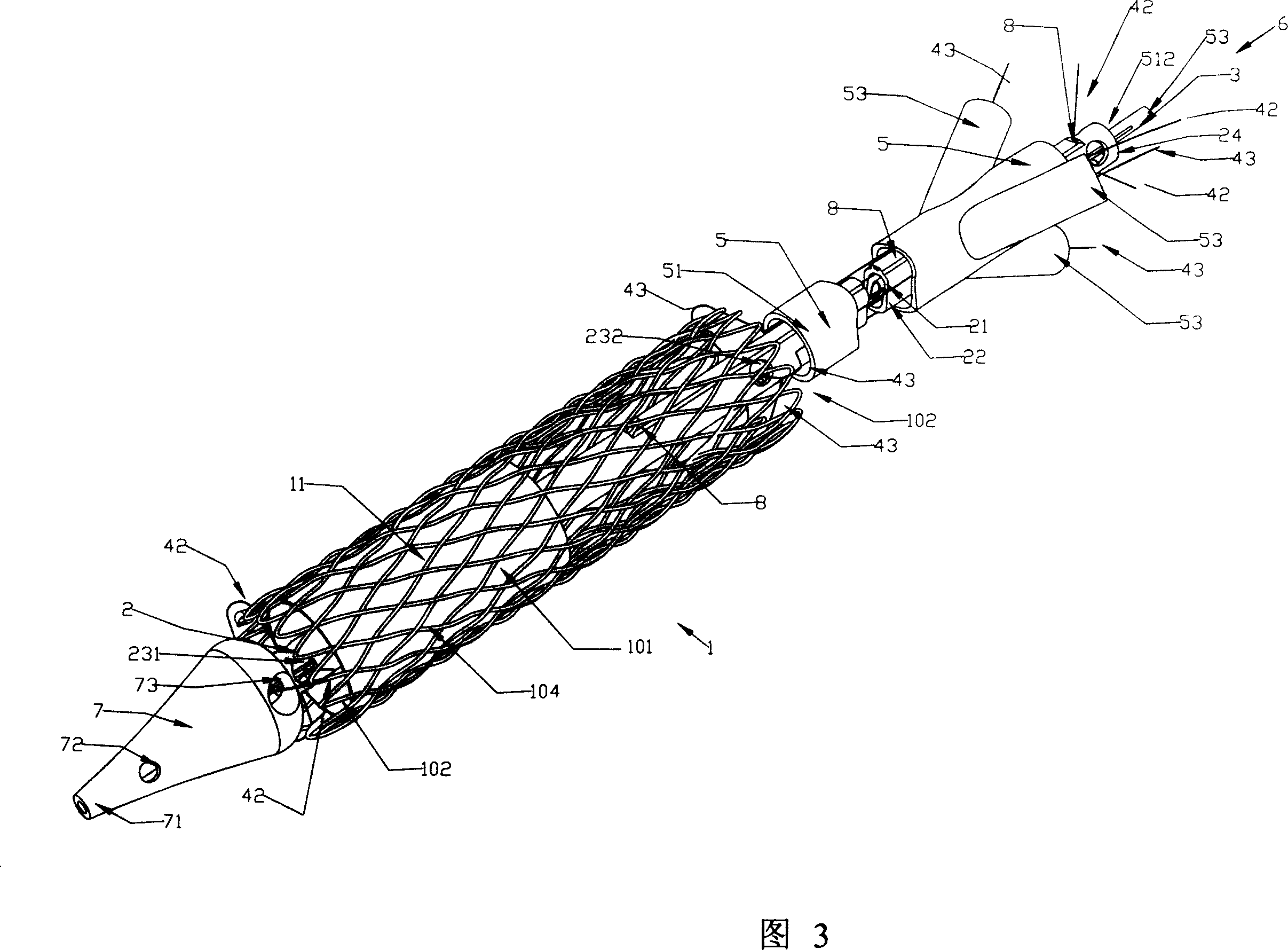Self-expanding stent axial wire-drawing tensioning mechanism
A tensioning mechanism, axial technology, used in stents, medical science, prostheses, etc., can solve problems such as obstruction of blood flow, slippage, and difficulty in positioning
- Summary
- Abstract
- Description
- Claims
- Application Information
AI Technical Summary
Problems solved by technology
Method used
Image
Examples
Embodiment Construction
[0049] Referring to Fig. 1 to Fig. 9, the self-expanding stent axial cable tensioning mechanism of the present invention is used to cooperate with the delivery system and various stent pressing mechanisms to tension the self-expanding stent when the self-expanding stent is implanted in the heart vessel. The stent pressing mechanism wherein includes the inventor's flexible connecting ring pressing mechanism and the take-up pressing mechanism (referring to the inventor's other two patent applications: "Self-expanding stent flexible connecting ring pressing mechanism" and "Self-expanding stent flexible connecting ring pressing mechanism" Expansion bracket take-up and pressing mechanism").
[0050] The self-expanding stent 1 involved in the present invention includes a self-expanding stent-graft and a self-expanding stent-valve, and part or all of the stent wall of the self-expanding stent-graft is covered with a membrane 11 . The stent wall of the self-expanding stent valve is pa...
PUM
 Login to View More
Login to View More Abstract
Description
Claims
Application Information
 Login to View More
Login to View More - R&D
- Intellectual Property
- Life Sciences
- Materials
- Tech Scout
- Unparalleled Data Quality
- Higher Quality Content
- 60% Fewer Hallucinations
Browse by: Latest US Patents, China's latest patents, Technical Efficacy Thesaurus, Application Domain, Technology Topic, Popular Technical Reports.
© 2025 PatSnap. All rights reserved.Legal|Privacy policy|Modern Slavery Act Transparency Statement|Sitemap|About US| Contact US: help@patsnap.com



